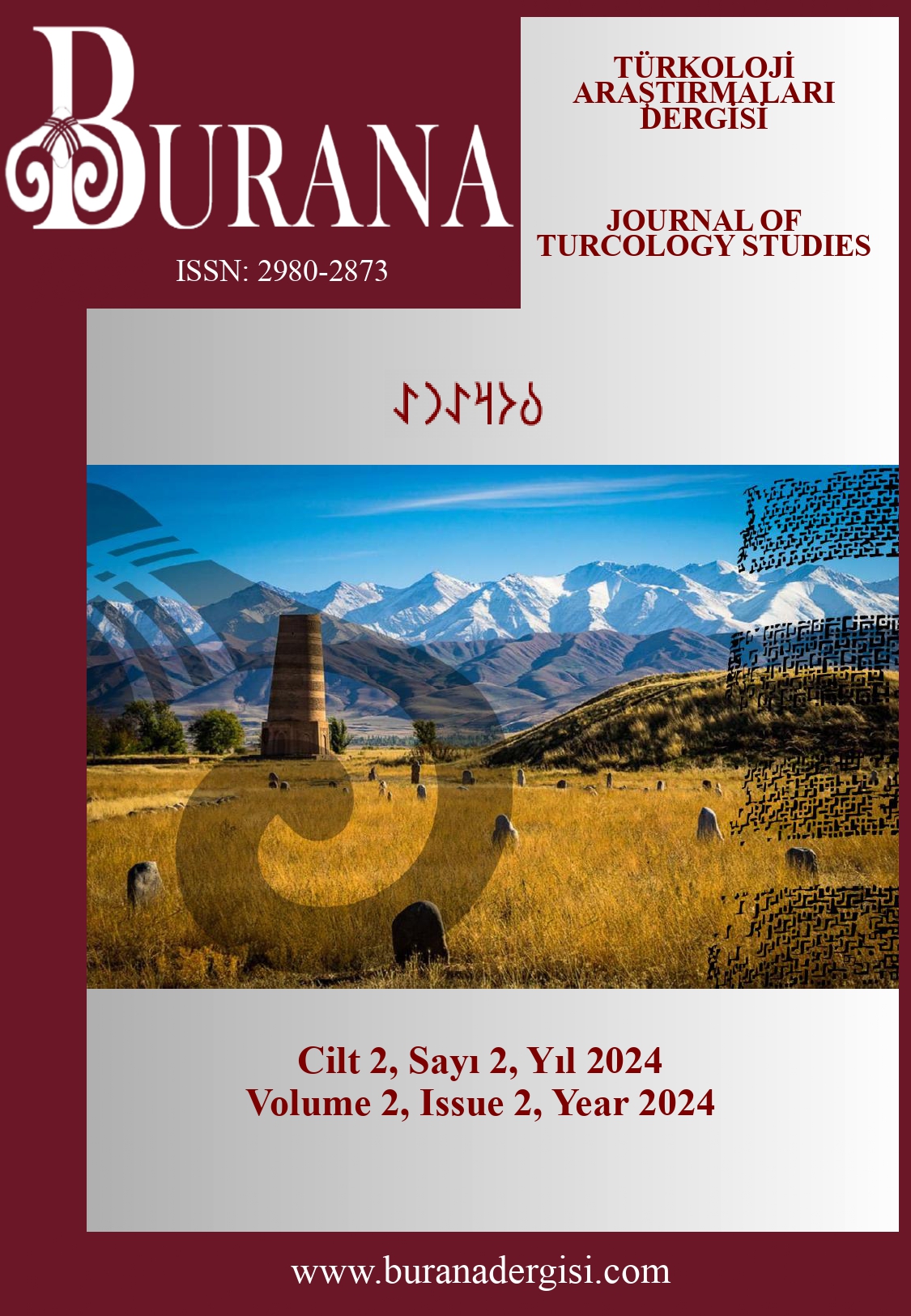The Use of Case Suffixes in The Turkic Dialects of the Kipchak Group in the Adverb Function
DOI:
https://doi.org/10.5281/%20zenodo.14567839Keywords:
Kipchak Group Turkic Dialects, Suffixes, Adverb FunctionAbstract
Suffixes establish temporary meaning relationships between words in a sentence. They are elements consisting of a sound or sounds that come to the end of roots and stems to create a new word. Suffixes are divided into two in terms of their functions: inflectional suffixes and derivational suffixes. Inflectional suffixes are added to nouns and verbs and establish relationships such as case, possessive, plural, mood, time and number between words according to the word groups they are attached to. Case suffixes, which are inflectional suffixes, are also among the most commonly used suffixes. They appear in almost every word group or sentence in the language. Case suffixes connect words together in word groups, complement the predicate in various aspects of sentences, and have a wide range of usage. One of these is that case suffixes are found in adverbs, both stereotyped and unstructured, in all historical and contemporary Turkic dialects.
Adverbs make or limit the meanings of verbs, adjectives, participles and adverbial words by affecting them in various aspects such as time, amount, qualification, place and direction. Adverbs are uninflected elements, but they can contain formulaic case suffixes. Adverbs are nouns of place, time, state and quantity. Due to the structure of Turkish, words that serve as adverbs in sentences can be nouns or adverbial forms of verbs. In the study, the use of case suffixes in the adverb function of the Northwest / Kipchak group Turkic dialects has been examined.
References
Argunşah, M. (2011). Türkçede zarf-fiil eklerinin durum ekleriyle kalıplaşması. Turkish Studies - International Periodical For The Languages, Literature and History of Turkish or Turkic, 6(1), 55-68.
Buran, A. (1999). İsim çekim ekleri. Türk Gramerinin Sorunları. TDK.
Buran, A. ve Alkaya, E. (2014). Çağdaş Türk yazı dilleri 3. Akçağ. (ÇTYD-3)
Çakmak, C. (2013). Birleşik zarf-fiil kavramı ve çağdaş Türk lehçelerindeki görünümleri. Dede Korkut Türk Dili ve Edebiyatı Araştırmaları Dergisi, 3(6), 13-30.
Eraslan, K. (1999). Çıkma hali (ablatif) ekinin oluşumu. 3. Uluslararası Türk Dil Kurultayı-1996, Ankara, Türkiye.
Gülensoy, T. (2000). Türkçe el kitabı. Akçağ.
Hatipoğlu, V. (1974). Türkçede eklerin kökeni. Türk Dili, XXXIX, 278-331.
Korkmaz, Z. (1992). Gramer terimleri sözlüğü. TDK.
Rezaei, M. (2018). ḳa zamiri ve onun türevleri hakkında bazı tespitler. Söylem Filoloji Dergisi, 3(2), 272-283.
Downloads
Published
How to Cite
Issue
Section
License
Copyright (c) 2024 BURANA - Journal of Turcology Studies

This work is licensed under a Creative Commons Attribution 4.0 International License.


